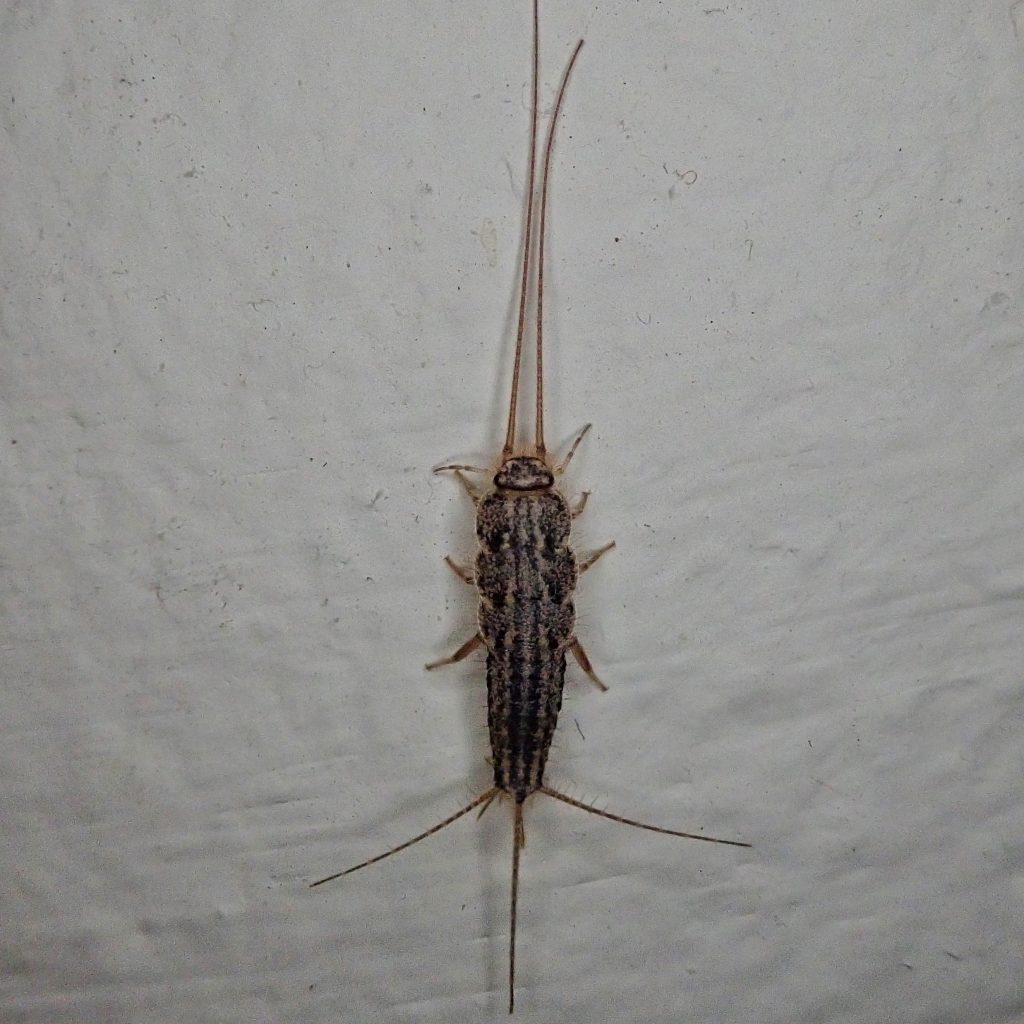
Usually the wingless insects in our apartment are just relocated without any attempt to identify them, since I have almost no resources about them. But, because of this project I will sometimes make the effort, if the bug seems distinctive. Which this one was, as well as seeming a little familiar. So I ran it through my process and realized that it had to be a Four-lined Silverfish! And, because of the familiarity I went back to a photo from 2 years ago and confirmed that that too had to be a Four-lined Silverfish. So, a productive Saturday morning without having to leave the house.
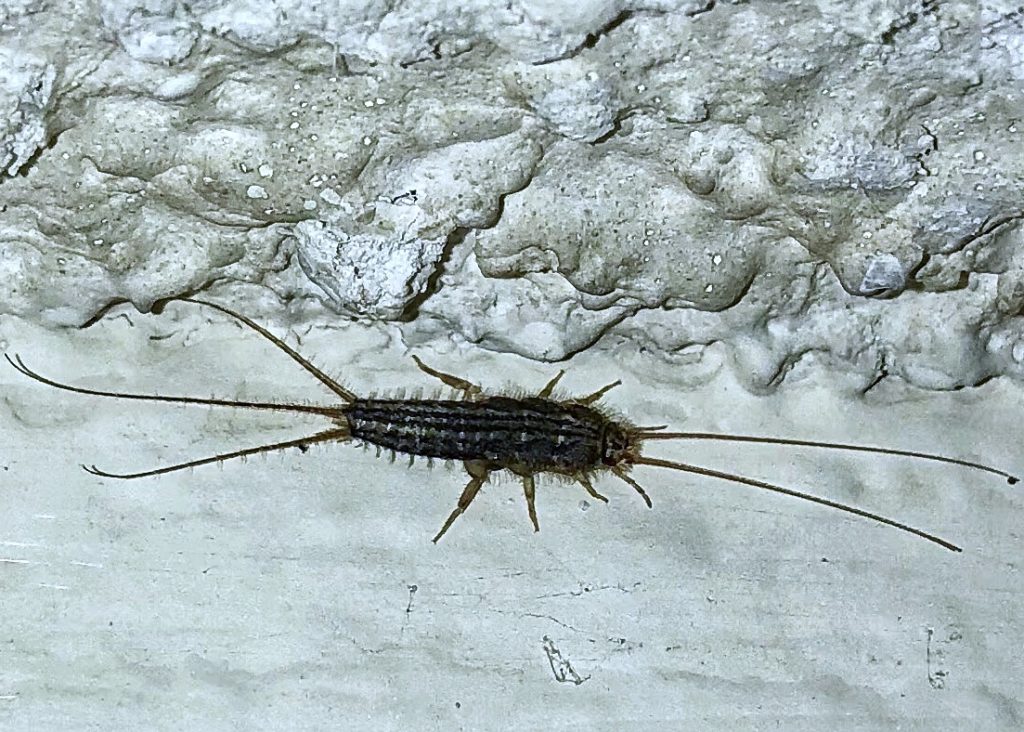
Ctenolepisma lineatum is the type species for this genus of primitive insects in the order Zygentoma (silverfish and firebrats). They used to be in the order Thysanura with Archaeognatha (jumping bristletails), and before that in the order Apterygota, with all of the other non-winged insects. For reasons too complex to be summarized here, neither of these turned out to be monophyletic clades, and Zygentoma (which means ‘bridge segment’, and was incorrectly thought to be the ‘missing link’ between non-winged arthropods and winged insects) ended up as a separate order. But if you want the whole story and aren’t averse to falling down a wikihole that will take up an afternoon and either leave you drooling with a splitting head, or fascinated beyond all measure, simply click here and keep following the links.
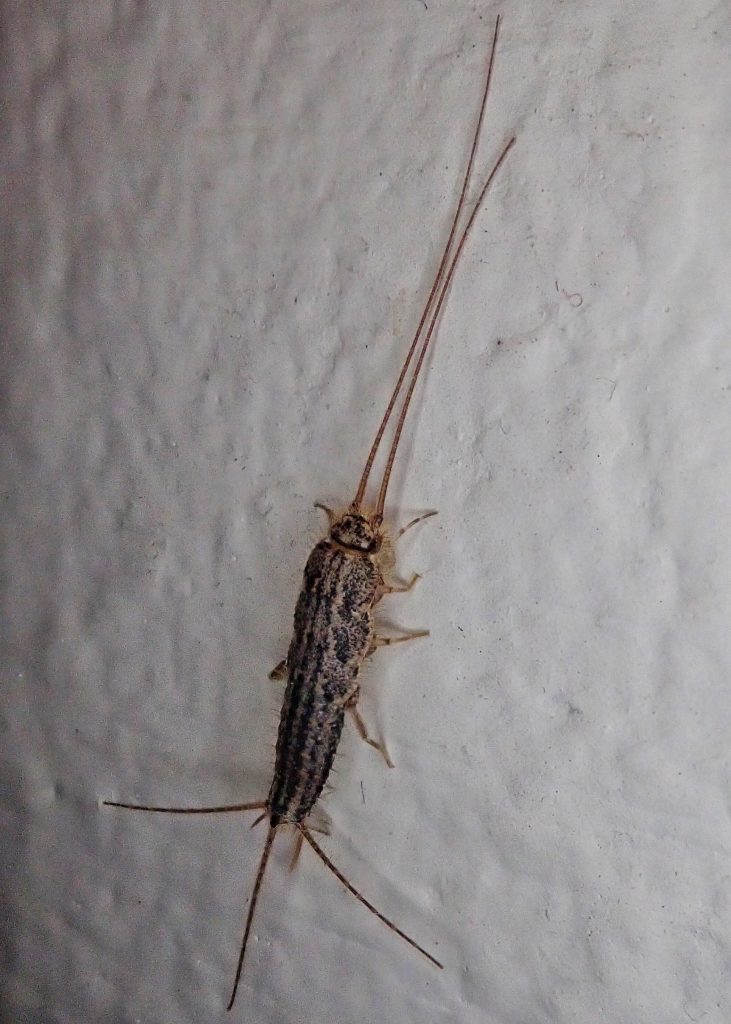
Ctenolepisma spp. in general are less dependent on human habitation (synanthropic) than other silverfish and firebrats, and C. lineatum can often be found outdoors in temperate climes. But when cold weather strikes they will be heading indoors. They are native to southern Europe, but are now cosmopolitan, although they tended not to occur in the far north. They were recently found for the first time in Norway. Climate change is certainly not responsible for that northward movement, as they can not survive outdoors during freezing winters, but higher temperatures lead to higher indoor temperatures and concomitant higher indoor humidity, which will probably facilitate breeding and survival, and offer greater numbers for anthropogenic dispersal.
Members of the order Zygentoma have an interesting courtship ritual. The male spins a thread between 2 objects. He deposits a spermatophore under this low thread and then coaxes a female to walk under it. When her cerci contact the silk thread, she picks up the spermatophore with her genital opening. Sperm are released into her reproductive system, and then she ejects and eats the empty packet.
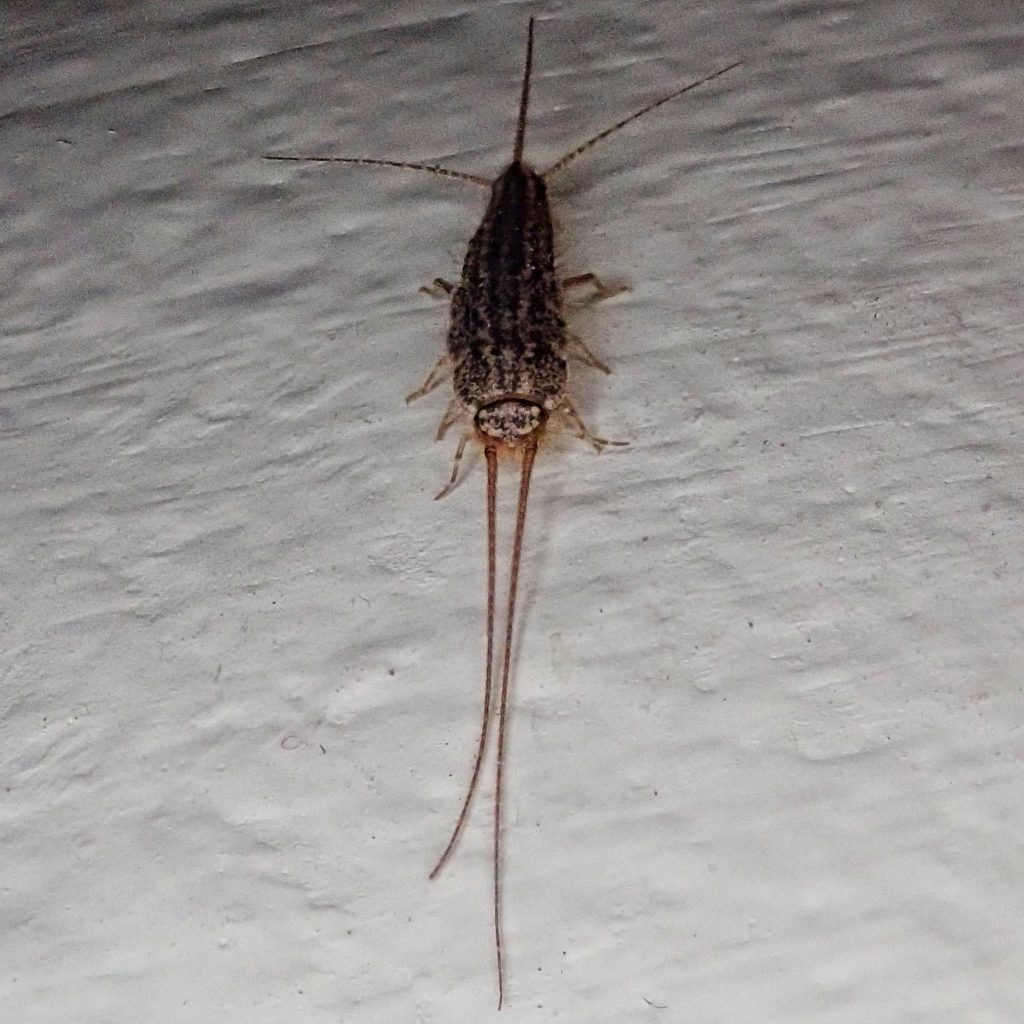
Description– 12-15mm body length. Like all members of their order they have long antennae, and three ‘tails’ (caudal filaments), the outside two being cerci, and the center one being an epiproct. In this species antennae and caudal filaments are very long. The body is grayish brown, with 4 yellowish brown lines on the abdomen, which ends in a rounded point.
Similar species– Common Silverfish (Lepisma saccharina) is uniform shiny grey, with shorter antenna and caudal filaments, and narrower body. Ctenolepisma longicaudata is larger (15-19mm) uniform dull, dark grey, with last abdominal segment squared off.
Habitat– Found in basements and on walls indoors. Under leaf litter, logs and stones outside. Flourishes in higher humidity.
Range– Cosmopolitan.
Eats– Starches and protein containing substances such as paper, book glue, dog food, and cereals. Can exist on a diet of pure cellulose as shown by Lasker and Giese (1956)
Eaten by– Almost any insectivore which can catch it. But they are fast and agile and can disappear into minute cracks.
Adults active– Year around
Etymology of names-Unclear. Cteno-means ‘comb’ and it means ‘livestock’ in Greek; –lepisma means ‘scales’ in Greek, and these silverfish are covered in scales. The epithet lineatum probably refers to the lined abdomen. The silver- of their common name refers to the shiny scales of many of these insects, and -fish has to do with the way they wiggle like a fish when they move fast.
https://bugguide.net/node/view/156092
https://en.wikipedia.org/wiki/Ctenolepisma_lineatum
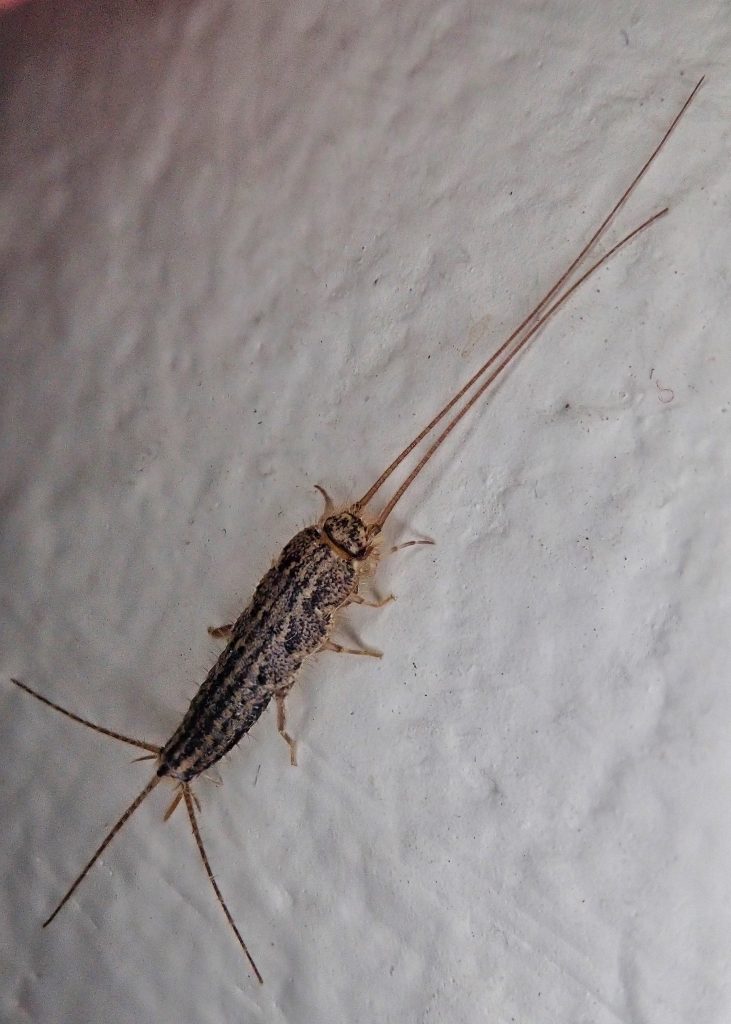
Another fascinating reproductive strategy!
True